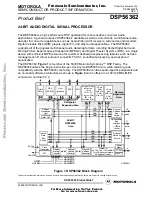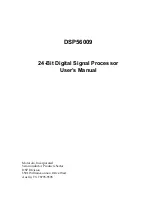
OPTIMOD-TV DIGITAL
TROUBLESHOOTING
5-3
If you are using an external processor ahead of the 8382, be sure it is not clipping or
otherwise causing problems.
Audible Noise on Air
(See also “RFI, Hums, Clicks, or Buzzes” on page 5-1.)
Excessive compression will always exaggerate noise in the source material. The 8382
has two systems that fight this problem. The
silence gate
freezes the gain of the
AGC and compressor systems whenever the input noise drops below a level set by
the threshold control for the processing section in question, preventing noise below
this level from being further increased.
There are two independent silence gate circuits in the 8382. The first affects the AGC
and the second affects the Multiband Compressor. Each has its own threshold con-
trol. (See
M
B
G
ATE
on page 3-40.)
In television audio, the setting of the
G
ATE
T
HRESHOLD
control is quite critical if you
want the processing to be undetectable to the audience. If this control is set too
low, then the 8382 will pump up quiet sounds such as ambiance and underscoring to
unnaturally high levels. Refer to Section 3 of this manual for a further discussion.
In the Multiband structure,
dynamic single-ended noise reduction
(see
D
WNEXP
T
HR
on page 3-41) can be used to reduce the level of the noise below the level at which
it appears at the input.
If you are using the 8382's analog input, the overall noise performance of the sys-
tem is usually limited by the overload-to-noise ratio of the analog-to-digital con-
verter used by the 8382 to digitize the input. (This ratio is better than 108 dB.) It is
important to drive the 8382 with professional levels (more than 0 dBu reference
level) to achieve adequately low noise. (Clipping occurs at +27 dBu.)
The 8382's AES3 input is capable of receiving words of up to 24 bits. A 24-bit word
has a dynamic range of approximately 144 dB. The 8382's digital input will thus
never limit the unit's noise performance even with very high amounts of compres-
sion.
If an analog studio-to-transmitter link (STL) is used to pass unprocessed audio to the
8382, the STL's noise level can severely limit the overall noise performance of the
system because compression in the 8382 can exaggerate the STL noise. For example,
the overload-to-noise ratio of a typical analog microwave STL may only be 70-75 dB.
In this case, it is wise to use the Orban 8200ST Studio AGC to perform the AGC func-
tion prior to the STL transmitter and to control the STL's peak modulation. This will
optimize the signal-to-noise ratio of the entire transmission system. An uncom-
pressed digital STL will perform much better than any analog STL. (See
Studio-
Transmitter Link,
starting on page 1-11.)
Whistle on Air, Perhaps Only in Stereo Reception
This could be caused by a number of problems, any of which could present a spuri-
ous tone to the input of an external stereo encoder. In any such case, the first thing
to do is to examine the left and right analog outputs with a spectrum analyzer to
see if any spurious tones are visible. If a spur appears at both outputs, it is probably
Summary of Contents for Optimod-TV 8382
Page 22: ......
Page 108: ......
Page 162: ......
Page 174: ......
Page 213: ...OPTIMOD TV DIGITAL TECHNICAL DATA 6 25...
Page 219: ...OPTIMOD TV DIGITAL TECHNICAL DATA 6 31 CPU Module...
Page 225: ...OPTIMOD TV DIGITAL TECHNICAL DATA 6 37 RS232 BOARD PARTS LOCATOR...
Page 227: ...OPTIMOD TV DIGITAL TECHNICAL DATA 6 39 POWER SUPPLY PARTS LOCATOR...
Page 229: ...OPTIMOD TV DIGITAL TECHNICAL DATA 6 41 8382 I O Board Parts Locator...
Page 234: ...6 46 TECHNICAL DATA ORBAN MODEL 8382 DSP BOARD PARTS LOCATOR DRAWING 32170 000 14...
Page 242: ...6 54 TECHNICAL DATA ORBAN MODEL 8382 DISPLAY BOARD PARTS LOCATOR...
Page 243: ...OPTIMOD TV DIGITAL TECHNICAL DATA 6 55 DISPLAY BOARD...
















































